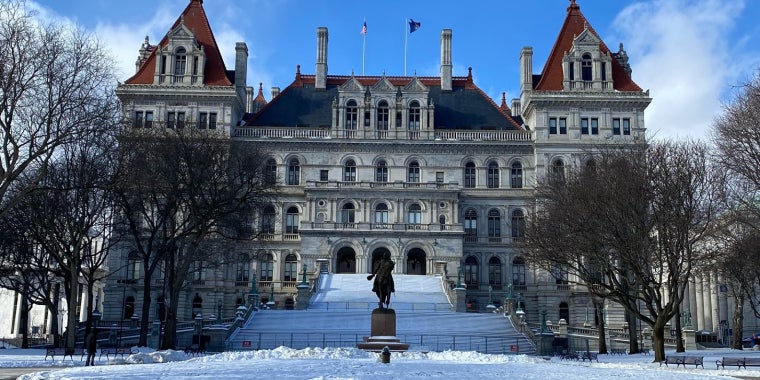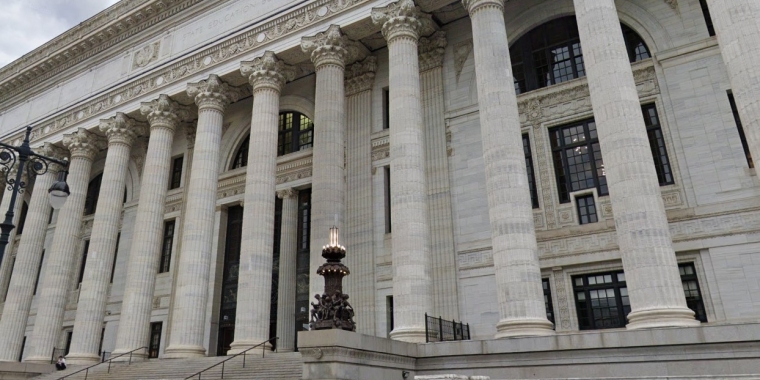
Gallivan Sees Opportunity To Build Off Last Year’s Successful Budget With More Reform in 2012
Patrick M. Gallivan
March 7, 2012
-
ISSUE:
- Agencies
- Legislature
- Executive
- Budget
- Taxes

Senate Republican Budget Plan Will Include Expansive “New Jobs-NY” Plan
Senator Patrick M. Gallivan (R,C,I – 59th District) joined fellow Republican members of the Senate today to announce details of the 2012 NEW JOBS-NY Job Creation Plan. The plan puts forth policies critical to revitalizing Western New York, including; tax relief to encourage the creation of new jobs, measures to ensure fiscal responsibility and control state spending, as well as other reforms and incentives to make New York more economically competitive. The plan is part of the Senate budget resolution to be acted on next week.
“During my first 15 months in office, New York State has shown real progress and delivered real results for citizens, particularly when compared to the gridlock and partisanship on display in Washington, and which has previously plagued Albany,” said Gallivan. “The successes of last year began with a budget process that cut spending for the first time 25 years while holding the line on taxes for New York State families and businesses. The New Jobs-NY proposal seeks to build on that progress by continuing to cut taxes, protect taxpayers, and stimulate the economy.”
Specifically, the New Jobs-NY plan calls for:
• A 20 percent tax cut for small businesses: reducing the corporate tax rate for small businesses from 6.85 percent to 5.5 percent and eliminating the fixed dollar minimum; This would save almost 200,000 small businesses $65 million;
• A 10 percent tax credit for 800,000 small businesses that pay under the personal income tax will save them $120 million;
• Accelerating the end of the 500 percent energy tax increase imposed previously from the current expiration date in 2014 to 2013. Saving millions of dollars, especially for industries vital to Western New York, such as manufacturing and agriculture;
• An innovative new tax financing plan to free-up investment capital;
• A new job creating incentive would give businesses a tax credit of up to $5,000 for each new job they create; or up to an $8,000 credit if the job goes to someone on unemployment; or up to a $10,000 credit if a business hires a returning military veteran; and
• Tying existing tuition tax credits and deductions enacted in 2000 to the Higher Education Price Index to provide tuition relief for middle class families and ensure that assistance keeps pace with the increasing costs of higher education.
Additional provisions of the 2012 New Jobs-NY plan include a two percent state spending cap; requiring a super-majority vote to increase state taxes; placing a moratorium on new taxes and fees; and new regulatory reforms to cut expensive red tape for businesses.
Job-Creating Tax Cuts
• 20% TAX CUT FOR SMALL BUSINESSES: The plan would provide small businesses with a corporate tax rate cut from 6.85 percent to 5.5 percent – a 20 percent reduction. It would also eliminate the fixed dollar minimum. This $65 million tax cut impacts almost 200,000 small businesses and would make our state more competitive, helping to create thousands of new jobs.
• SMALL BUSINESS JOBS CREDIT: The plan would also provide a 10% tax credit for about 800,000 small businesses that have at least one employee, have business income of less than $250,000, and that filed under the personal income tax. This tax credit would save businesses $120 million.
• ELIMINATE 2009’s 500 PERCENT ENERGY TAX HIKE: The New Jobs-NY plan seeks to accelerate the expiration of the dramatic 500 percent hike in the 18a assessment that New Yorkers pay on utility bills. This disastrous tax hike – enacted in 2009 -- took $1.2 billion out of the economy and chased businesses and jobs out of New York.
The new Energy Tax Cut would accelerate the phase-out of this huge tax hike by one year, from 2014 to 2013. By cutting taxes earlier than previously scheduled, $600 million in relief can be realized, giving a major boost to New York’s economy.
“Small businesses, manufacturers and family farms comprise the backbone of the Western New York economy, said Gallivan. “Cutting taxes for New York State’s small businesses, while reducing the 18a energy tax assessment, will help provide job opportunities for tens of thousands of people and give a boost to large employers who have high energy needs -- especially in the manufacturing and agricultural sectors.”
New Incentives For Job Creation
• “HIRE-NOW-NY” TAX INCENTIVE: The Hire-Now-NY proposal includes direct incentives to encourage businesses to begin expanding their workforce again. For each new job they create, a business would get a tax credit of up to $5,000. That credit would increase to up to $8,000 if the job goes to someone on unemployment.
• “HIRE-A-VET” ENHANCED CREDIT: The Senate job creation plan would provide an enhanced tax credit of up to $10,000 to any business that hires a veteran returning home from military service.
Taxpayer Protection and Fiscal Responsibility
• STATE SPENDING CAP: The cap, set at two percent or 120 percent of inflation, whichever is lower, would help to ensure fiscal responsibility, and provide a better environment for economic growth and job creation.
• CONSTITUTIONAL AMENDMENT TO HELP PREVENT TAX INCREASES: This constitutional amendment would require a two-thirds “super majority” vote, rather than a simple majority, for any tax increase – making it far more difficult to raise taxes.
• MORATORIUM ON NEW TAXES AND FEES: Last year, the Senate worked with Governor Cuomo to close a $10 billion budget deficit – without resorting to any new taxes and fees. The new Senate plan again commits to enacting a new State Budget that avoids any new taxes and fees.
“This plan builds upon the accomplishments of last year and sets a bold agenda for the future,” said Senator Gallivan. “Each individual proposal is critical to the economic revitalization of Western New York and will encourage job growth. Governor Cuomo has proven to be an engaged partner thus far, and I fully expect he will recognize the merits of this plan and their potential impact on Western New York businesses, families, and farms.”
Last year’s achievements included:
· Passing an on-time state budget;
· Closing a $10 billion budget deficit without raising taxes;
· Reducing state spending;
· Cutting taxes on small businesses;
· Enacting a property tax cap;
· Approving the UB2020/SUNY 2020 economic development plan;
· Repealing the MTA payroll tax for 80 percent of the business that paid it;
· Enacting the Recharge-NY power-for-jobs plan
· Cutting taxes for middle class families and reducing tax rates to the lowest level in half a century; and
· Enacting a tax cut for Upstate manufacturers.
###



